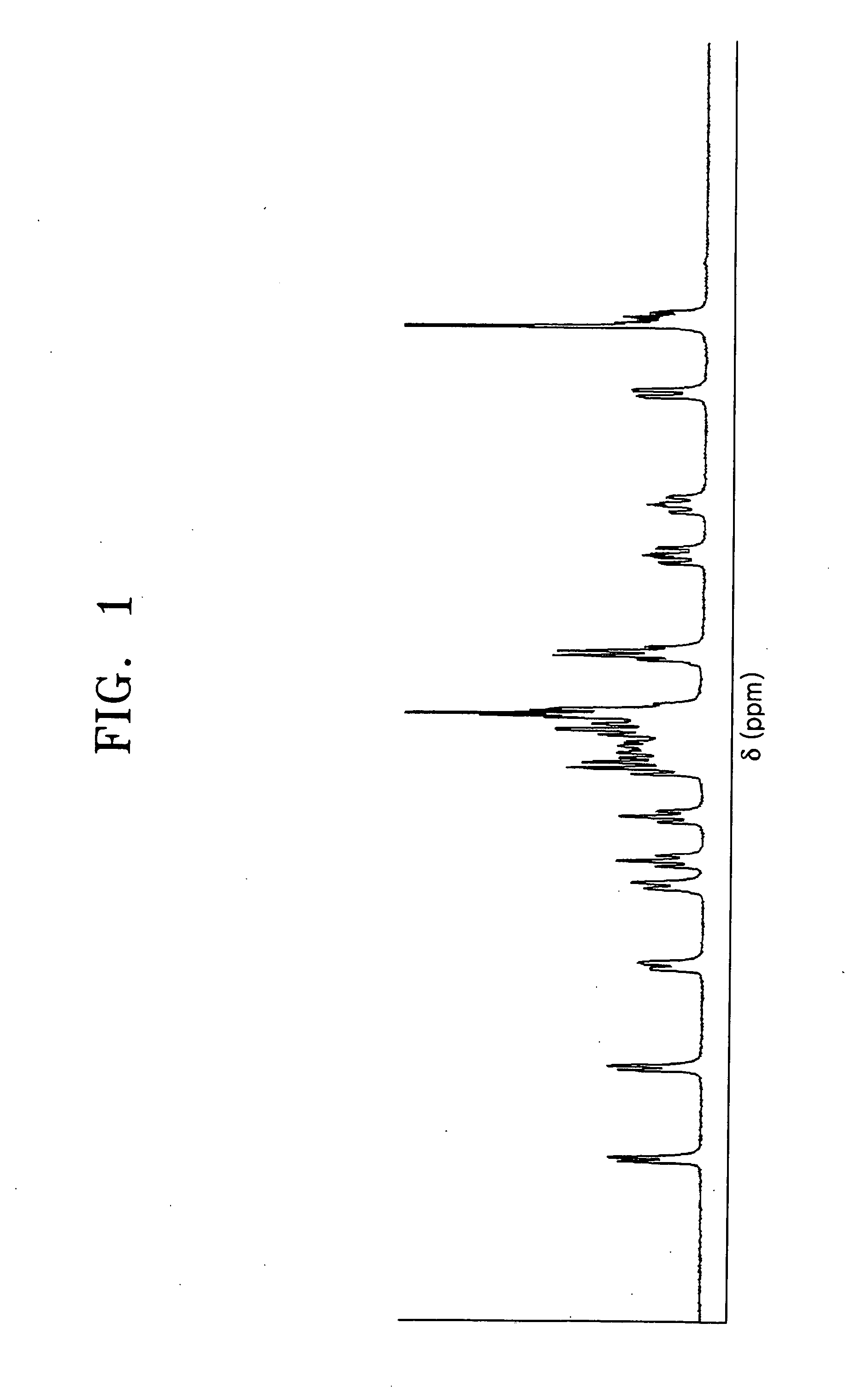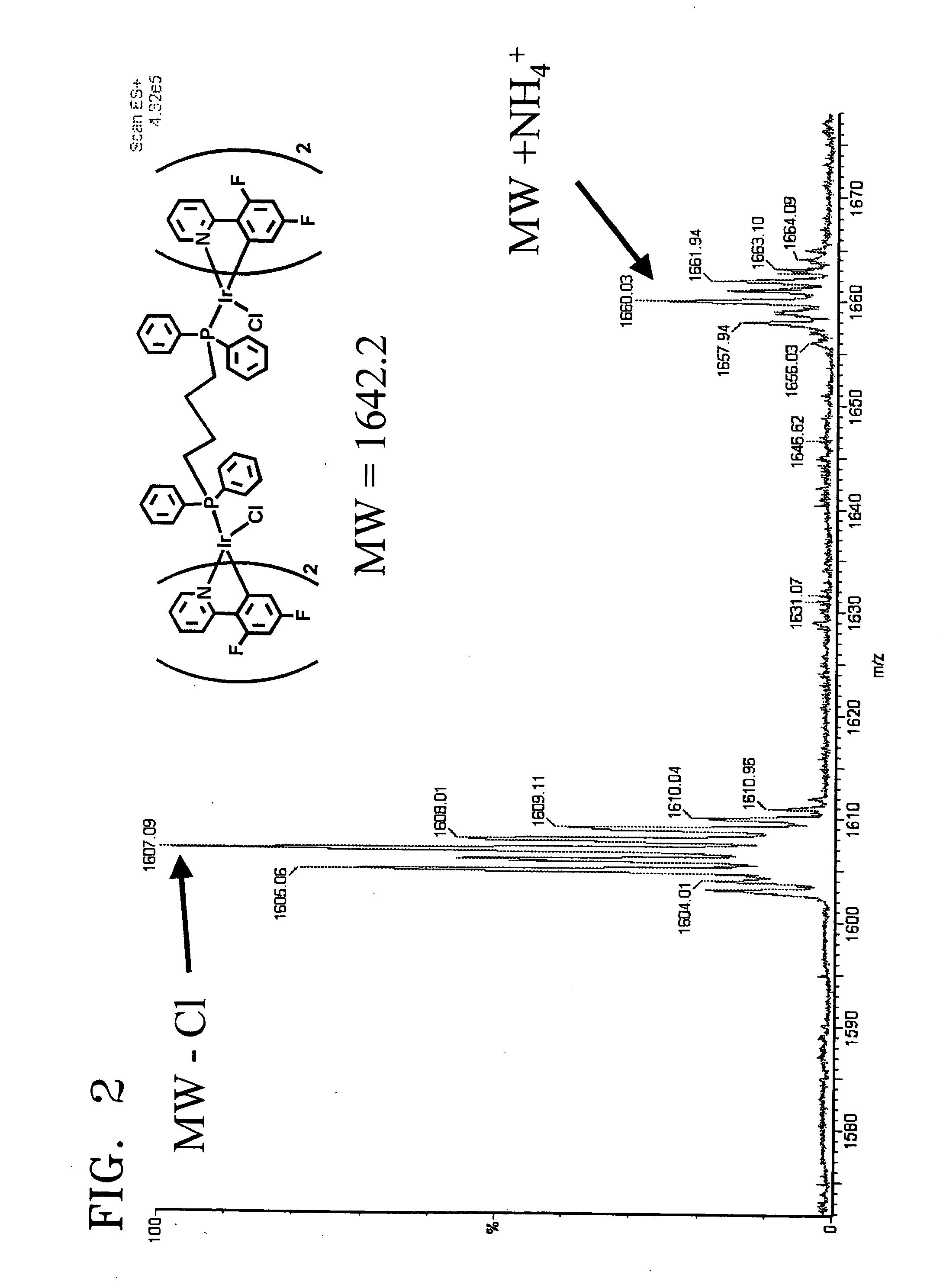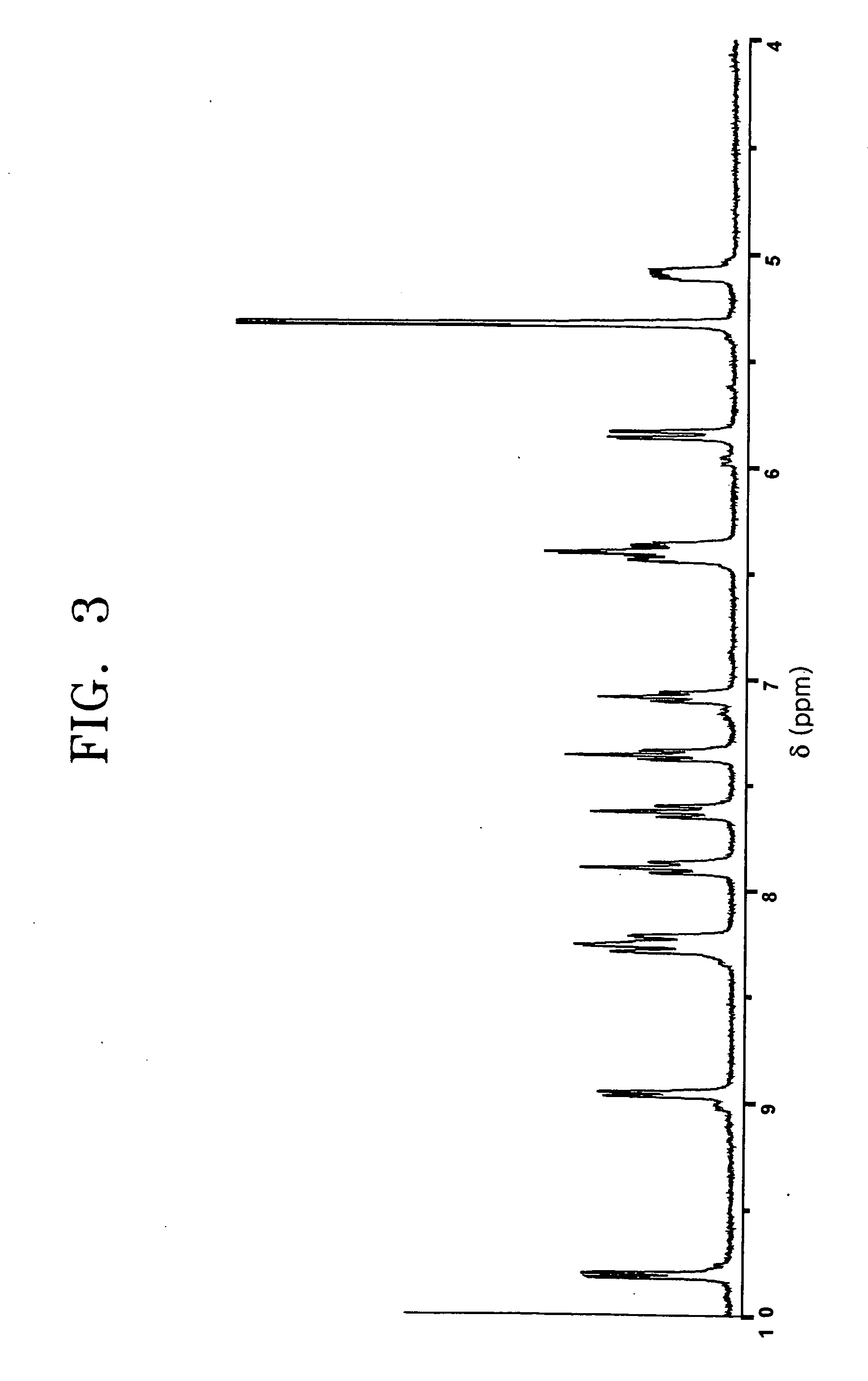Binuclear organometallic complexes and organic electroluminescence device using the same
- Summary
- Abstract
- Description
- Claims
- Application Information
AI Technical Summary
Benefits of technology
Problems solved by technology
Method used
Image
Examples
example 1
[0049] Synthesis of [Ir(F2ppy)2Cl]2P(Ph)2(CH2)4P(Ph)2 Represented by Formula 2
[0050] To 0.1 mmol of iridium complex [Ir(F2ppy)2Cl]2 represented by the following formula, dissolved in 10 mL methylene chloride, was slowly added 0.1 mmol of P(Ph)2(CH2)4P(Ph)2 (BDP), and stirred under a nitrogen atmosphere at room temperature for 2 hours.
[0051] Then, the reaction mixture was distilled under reduced pressure to remove the solvent, acquiring a lemon color solid. The acquired solid was isolated by silica gel column chromatography using a mixed solvent consisting of methylene chloride and acetone in a volumetric ratio of 10:1, dissolved in 5 mL of methylene chloride, and reprecipitated by hexane as a yellow precipitate, followed by filtering and drying. This procedure was repeatedly performed three times, yielding a final product represented by formula 2, that is, [Ir(F2ppy)2Cl]2P(Ph)2(CH2)4P(Ph)2. The composition and structure of the final product were identified through mass spectromet...
example 2
[0058] Synthesis of [Ir(F2ppy)2CN]2P(Ph)2(CH2)4P(Ph)2 Represented by Formula 3 and [Ir(F2ppy)2Cl]-P(Ph)2(CH2)4P(Ph)2-[Ir(F2ppy)2CN] Represented by Formula 4
[0059] 0.1 mmol of [Ir(F2ppy)2Cl]2BDP represented by formula 2 was dissolved in 10 mL methylene chloride under a nitrogen atmosphere, and then added to 10 mmol of KCN dissolved in 15 mL of methanol. The reaction mixture was stirred under a nitrogen atmosphere at room temperature for 5 hours, and the solvent was removed by distillation under reduced pressure. Then, the reaction product was isolated by silica gel column chromatography using a mixed solvent consisting of methylene chloride, acetone and hexane in a volumetric ratio of 9:1:3. The column chromatography yielded 3 bands. Precipitates were obtained from each eluate passing through the column by the same method as in Example 1. The first eluate was unreacted [Ir(F2ppy)2Cl]2BDP, the second eluate was [Ir(F2ppy)2 Cl]-BDP-[Ir(F2ppy)2CN]represented by formula 4, and the third...
example 3
[0066] Synthesis of [Ir(F2ppy)2 Cl]2P(Ph)2(CH2)2P(Ph)(CH2)2 Represented by Formula 5
[0067] 0.1 mmol of [Ir(F2ppy)2 Cl]2 represented by the following formula was dissolved in 10 mL of methylene chloride under a nitrogen atmosphere, and 0.1 mmol of P(Ph)2(CH2)2P(Ph) (CH2)2P(Ph)2(3P) was added thereto.
[0068] The reaction mixture was stirred at room temperature for 24 hours and then the solvents were removed under reduced pressure, and a yellow colored solid was obtained. The acquired solid was passed through a silica gel column using ether as the eluent, followed by the removal the solvent. Thereafter, the resultant product was passed through a silica gel column using a mixed solvent consisting of methylene chloride, acetone and hexane in a volumetric ratio of 12:1:3, acquiring a yellow solid after the solvent evaporation. The solid was precipitated upon the addition of hexane to a methylene chloride solution. The structure of the compound represented by formula 5, is identified thr...
PUM
| Property | Measurement | Unit |
|---|---|---|
| Nanoscale particle size | aaaaa | aaaaa |
| Luminescence | aaaaa | aaaaa |
Abstract
Description
Claims
Application Information
 Login to View More
Login to View More - R&D
- Intellectual Property
- Life Sciences
- Materials
- Tech Scout
- Unparalleled Data Quality
- Higher Quality Content
- 60% Fewer Hallucinations
Browse by: Latest US Patents, China's latest patents, Technical Efficacy Thesaurus, Application Domain, Technology Topic, Popular Technical Reports.
© 2025 PatSnap. All rights reserved.Legal|Privacy policy|Modern Slavery Act Transparency Statement|Sitemap|About US| Contact US: help@patsnap.com



